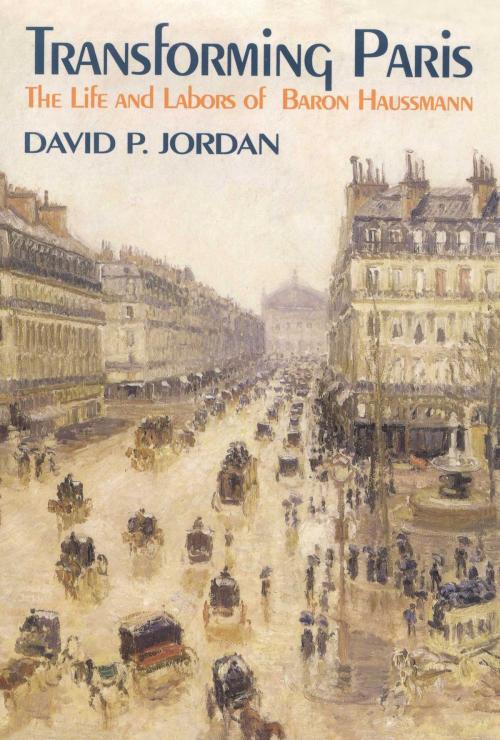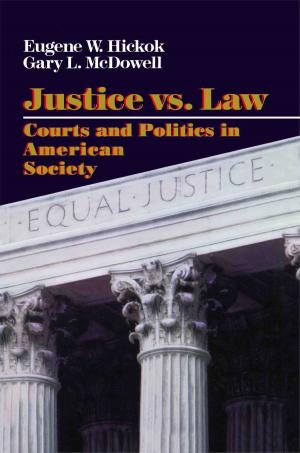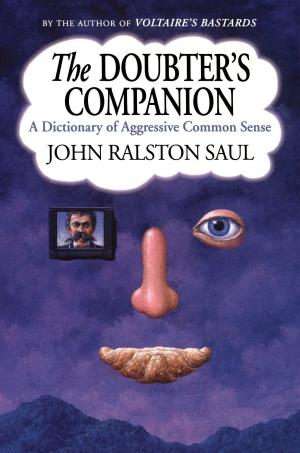| Author: | David P. Jordan | ISBN: | 9781439106013 |
| Publisher: | Free Press | Publication: | January 1, 1995 |
| Imprint: | Free Press | Language: | English |
| Author: | David P. Jordan |
| ISBN: | 9781439106013 |
| Publisher: | Free Press |
| Publication: | January 1, 1995 |
| Imprint: | Free Press |
| Language: | English |
The Paris we know today, with its grand boulevards, its bridges and parks, its monumental beauty, was essentially built in only seventeen years, in the middle of the nineteenth century. In this brief period, whole neighborhoods of medieval and revolutionary Paris -- over-crowded, dangerous, and filthy -- were razed, and from the rubble a modern city of light and air emerged. This triumphant rebuilding was chiefly the work of one man, Baron Georges Haussmann, Napoleon III's Prefect of the Seine.
It was Haussmann's task to assert, in stone, the power and permanence of Paris, to show the world that it was the seat of an empire of mythic proportions. To this end, he imposed grand visual perspectives, as when he transformed Napoleon I's Arc de Triomphe into a magnificent twelve-armed star from which radiated the broadest boulevards of Europe. Below ground, his modern sewer system became one of the wonders of the civilized world, eagerly toured by royalty and commoners alike.
Haussmann's mandate was not only to create an impression of grandeur but to secure the city for better control by government. By creating formal spaces where there had previously been a maze of chaotic streets, Haussmann opened Paris to effective police control and thwarted the recurrent demonstration of its well-known revolutionary fervor. The determined and autocratic Haussmann imprinted rational order and bourgeois civility on the unruly city which had for so long simmered with riot and insurrection.
Though he planted chestnut trees, installed gas lights, rebuilt the water supply, and improved transportation and housing, Haussmann's labors were (and remain) controversial. He forced tens of thousands of the poor from the center of the city, and destroyed significant parts of old Paris. But in this important new biography David Jordan reminds us that Haussmann was not immune to the charms of the old city. By leaving some areas intact, the Baron achieved the grand effect of implanting a modern city boldly within an ancient one. Here, at last, Haussmann's labors are given the aesthetic as well as the historical appreciation they deserve.
The Paris we know today, with its grand boulevards, its bridges and parks, its monumental beauty, was essentially built in only seventeen years, in the middle of the nineteenth century. In this brief period, whole neighborhoods of medieval and revolutionary Paris -- over-crowded, dangerous, and filthy -- were razed, and from the rubble a modern city of light and air emerged. This triumphant rebuilding was chiefly the work of one man, Baron Georges Haussmann, Napoleon III's Prefect of the Seine.
It was Haussmann's task to assert, in stone, the power and permanence of Paris, to show the world that it was the seat of an empire of mythic proportions. To this end, he imposed grand visual perspectives, as when he transformed Napoleon I's Arc de Triomphe into a magnificent twelve-armed star from which radiated the broadest boulevards of Europe. Below ground, his modern sewer system became one of the wonders of the civilized world, eagerly toured by royalty and commoners alike.
Haussmann's mandate was not only to create an impression of grandeur but to secure the city for better control by government. By creating formal spaces where there had previously been a maze of chaotic streets, Haussmann opened Paris to effective police control and thwarted the recurrent demonstration of its well-known revolutionary fervor. The determined and autocratic Haussmann imprinted rational order and bourgeois civility on the unruly city which had for so long simmered with riot and insurrection.
Though he planted chestnut trees, installed gas lights, rebuilt the water supply, and improved transportation and housing, Haussmann's labors were (and remain) controversial. He forced tens of thousands of the poor from the center of the city, and destroyed significant parts of old Paris. But in this important new biography David Jordan reminds us that Haussmann was not immune to the charms of the old city. By leaving some areas intact, the Baron achieved the grand effect of implanting a modern city boldly within an ancient one. Here, at last, Haussmann's labors are given the aesthetic as well as the historical appreciation they deserve.















